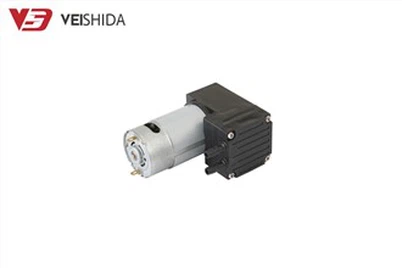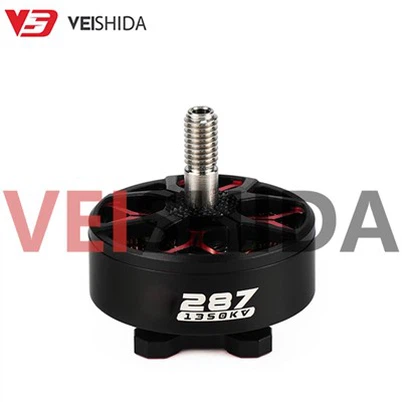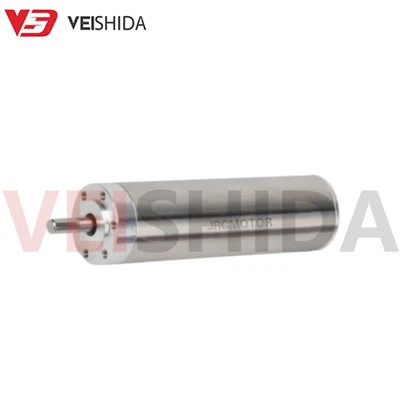How to Calculate Drone Motor Thrust Step by step guide
Leave a message
Why Calculate Drone Motor Thrust
In our previous articles, we repeatedly mentioned that the motor is the core power system of the drone, which determines whether the drone can fly, how stable it is in the air, whether it can carry weight, and how long it can fly. You already know what a brushless DC motor (BLDC) is, how drone motors work, and how to choose different types of drone motors...
Now, it's time to take a closer look at another key parameter: thrust.
Thrust determines whether a drone can take off and hover, and also determines whether you can mount cameras, mapping modules, load cargo and other mission equipment.
Insufficient thrust → cannot fly; too much thrust → wastes energy and shortens endurance.
Only with appropriate thrust can the motor, propeller, electric speed controller and battery form a stable and efficient system.
In the following section, we will teach you the core ideas of thrust evaluation step by step, from the definition of thrust, motor power calculation, thrust-to-weight ratio recommendations, to ESC matching methods.

What is drone thrust? A quick introduction to the basic concept
In physics, thrust is the force that pushes an object forward or upward, and its unit is usually Newton (N) or gram (g)/kilogram (kg). In the drone industry, we more often use "grams" or "kilograms" to measure the thrust of the motor, which directly reflects how much weight it can "lift".
1. Basic definition of thrust
Thrust = Motor + propeller upward force at a certain input power
For example:
If a motor produces 1000g of thrust, it means that it can "lift" a weight of less than 1kg under static conditions.
The thrust of each motor of a quadcopter is 1000g, and the total thrust is 4000g (4kg), which can theoretically support a maximum take-off weight of 2kg (thrust-to-weight ratio of 2:1).
This value is directly related to the aircraft's "take-off capability" and "load capacity".
2. Static thrust vs dynamic thrust
In practical applications, we often distinguish between static thrust and dynamic thrust:
|
type |
Definition |
Test method |
|
Static thrust |
The thrust generated by the motor + propeller in still air |
Placed on the thrust test platform |
|
Dynamic thrust |
The thrust that the motor + propeller can provide in flight/motion |
Wind tunnel or aerial measurement (more complex) |
The motor thrust value we often talk about usually refers to the "static thrust", which is also the standard data tested and published by motor manufacturers.
3. Thrust-to-weight ratio: a key indicator for selecting a motor
Thrust-to-weight ratio = total thrust ÷ takeoff weight, is an important indicator for evaluating flight performance:
|
Flight use |
Recommended thrust-to-weight ratio |
illustrate |
|
Aerial photography/mapping drone |
2:01 |
Ensure hovering and load stability |
|
Industrial reconnaissance/highland operations |
2.5:1 ~ 3:1 |
Improve redundancy to cope with changes in air pressure/environment |
|
Racing FPV Drone |
4:1 ~ 6:1 |
Rapid acceleration and intense maneuvers require a high thrust-to-weight ratio |
For example, for an aerial photography drone with a takeoff weight of 1500g, the recommended total thrust is about 3000g, which means you need to choose a solution where each motor can provide at least 750g of static thrust.

Relationship between voltage, current, power and thrust
To understand the mechanism of motor thrust generation, you must understand a basic physical relationship:
Motor power (W) = voltage (V) × current (A)
The generation of thrust is essentially that after the motor consumes a certain amount of electrical power, it accelerates the air downward through the propeller, thereby generating an upward reaction force. The greater the thrust, the higher the power consumption, the greater the current, and the faster the temperature rise.
1. The influence of voltage, current and power on thrust
|
parameter |
Impact Statement |
|
Voltage (V) |
The higher the voltage, the higher the power output when the current is the same → more suitable for large thrust platforms |
|
Current (A) |
Indicates the current load intensity of the motor. The greater the load, the more power it consumes and the higher the temperature rise. It needs to be matched with sufficient ESC. |
|
Power (W) |
The greater the power, the greater the thrust in theory, but be careful whether it exceeds the limits of the motor and ESC. |
Thrust enhancement cannot be achieved by simply increasing a single parameter. For example, simply increasing voltage or current may cause overheating, ESC burning, battery voltage drop, or even loss of flight control.
2. The relationship between KV value and thrust: Don't be confused by "high speed"
KV value (RPM/V) indicates the speed that the motor can reach when the motor is under no-load condition and the input voltage is 1V. For example, for a 1000KV motor, the theoretical speed is 10,000 RPM at 10V voltage.
High KV value: high speed, but low torque, suitable for small propellers, light loads, and racing scenarios;
Low KV value: low speed but high torque, suitable for large propellers, large thrust and load-bearing platforms.
Misconception: A higher KV does not necessarily mean greater thrust. The real thrust depends on the power and efficiency that the motor can continuously output under a certain load (propeller).
3. Example analysis: Thrust differences of different KVs on the same platform
Take two VSD motors as an example:
|
model |
KV value |
Voltage range |
Maximum Power |
Maximum thrust |
application |
|
2306 |
2400KV |
6S |
901W |
1683g |
FPV Racing Machine |
|
3115 |
900KV |
6S~8S |
1617W |
4185g |
Multi-rotor aerial photography |
With the same 6S voltage, although the 2306 has a high speed, its thrust is obviously lower than that of the 3115. This is the best explanation that the KV value is not proportional to the thrust.

How to calculate the thrust of a drone? Practical steps and estimation methods
Calculating motor thrust is not as "metaphysical" as many people think. Even if you don't have sophisticated testing equipment, as long as you master basic logic, reference data and reasonable estimates, you can make a preliminary judgment on whether a motor is suitable for your drone project.
We teach you at three levels:
1. Thrust-to-weight ratio estimation method (applicable to most application scenarios)
This is the most common and practical basis for selection:
Recommended total thrust = takeoff weight × recommended thrust-to-weight ratio
|
Flight Type |
Recommended thrust-to-weight ratio |
|
Aerial photography/mapping |
2:01 |
|
Cargo/Industrial Investigation |
2.5–3:1 |
|
Racing through |
4–6:1 |
example:
You are going to assemble a quadcopter drone for aerial photography. Its takeoff weight when fully loaded is 2.2 kg.
The recommended thrust-to-weight ratio is 2:1, so you need a total thrust ≥ 4.4kg (4400g).
Then the minimum thrust of each motor should be: 1100g.
2. Table comparison method (applicable when there is manufacturer test data)
If you choose a motor with detailed test data, such as the VSD series, you can directly refer to its maximum static thrust parameters and compare them with your needs.
|
Motor Model |
Recommended voltage |
Maximum thrust |
Recommended maximum load (thrust-to-weight ratio 2:1) |
|
3115 |
6S–8S |
4185g |
≤ 2.1kg |
|
2808 |
6S |
2910g |
≤ 1.45kg |
|
2306 |
6S |
1683g |
≤ 0.8kg |
In this way, you can quickly filter out the range of motors that meet the load requirements of the entire machine.
3. Manual calculation method (for detailed estimation or DIY users)
If you are very sensitive to the parameters, or do not have ready thrust data, you can also estimate it based on the following relationship:
(1) Power method estimation:
Theoretical thrust ≈ C × √(power × propeller diameter)
Where C is an empirical coefficient, usually ranging from about 6 to 9. The larger the propeller, the higher the efficiency.
Example: You estimate the maximum motor power to be 1600W with a 13-inch propeller.
The estimated thrust is ≈ 7 × √(1600 × 13) ≈ 7 × √20800 ≈ 7 × 144 ≈ 1008g
This method is suitable for approximate estimation, and the actual thrust still needs to be based on actual measurements.

After selecting the thrust, how to match the ESC and battery
Once you have determined the required thrust and motor model, the next step is to consider the matching of the supporting system, especially the ESC and battery. If the ESC current is insufficient and the battery output is unstable, the system will not work stably even if the thrust is sufficient.
Here are three core matching principles:
1. ESC current must be greater than the maximum motor current
ESC current rating should exceed the motor's maximum continuous current by a factor of 1.2 to 1.5
Practical advice: Choose an ESC that is 20-50% higher than the motor's maximum current
example:
VSD 3115 motor, maximum current is about 50A
→ Recommended ESC current ≥ 60A
VSD 2306 motor, maximum current is about 35A
→ Recommended ESC current ≥ 45A
Note: Although choosing an ESC that is too large is safe, it may also increase weight and power consumption, resulting in efficiency waste.
2. The battery voltage should match the motor KV value and the use environment
The KV value determines how many S batteries you should use (1S = 3.7V). Choosing the wrong battery voltage will result in insufficient thrust or overload and burnout.
|
KV Range |
Recommended battery S number |
Application suggestions |
|
800–1000KV |
6S ~ 8S |
Medium and large-scale aerial photography/surveying |
|
1300–1500KV |
4S ~ 6S |
Multi-rotor platform |
|
1800KV and above |
4S ~ 6S |
FPV racing, light aircraft |
example:
VSD 4720 motor, 420KV → 6S ~ 8S recommended
VSD 2808 motor, 1500KV → 6S recommended
VSD 2306 motor, 2400KV → 4S or 6S recommended (depending on the task requirements)
3. Propeller size affects thrust efficiency and system load
The larger the propeller size, the greater the torque and thrust, but the greater the burden on the ESC and motor. It is recommended to choose a reasonable propeller type combination based on the test data provided by the manufacturer.
Combined with VSD motor cases, quickly complete the thrust and supporting system selection
In the previous sections, we explained the definition of thrust, calculation method, voltage-current relationship, and how to select ESC and battery. Now, we will use the real data of VSD drone motors to show you a practical selection logic.
The following are some typical models of matching selection suggestions, suitable for different flight scenarios from light cross-country drones to large multi-rotors:
|
Motor Model |
KV value |
Voltage recommendations |
Maximum thrust |
Recommended propeller blades |
Recommended ESC current |
Applicable scenarios |
|
1800–2400KV |
4S~6S |
1683g |
5×4.3×3 three-blade propeller |
≥ 40A |
FPV Racing/ Drone |
|
|
1300–1950KV |
6S |
2910g |
7-9 inch propeller |
≥ 45A |
Medium Racing/ Small Load Multirotor |
|
|
1960KV |
6S |
1702g |
5 inch propeller |
≥ 40A |
Racing drone |
|
|
900–1520KV |
6S~8S |
4185g |
13×6.5 propeller |
≥ 60A |
Aerial photography/reconnaissance drones |
|
|
900KV |
6S |
2710g |
10-12 inch propeller |
≥ 50A |
Medium load aerial photography/industrial flight platform |
|
|
1350–1750KV |
4S~6S |
2728g |
6-8 inch propeller |
≥ 50A |
High maneuverability multirotor / flexible platform |
|
|
420KV |
6S~8S |
7232g |
15×7×3 or 13×9×3 |
≥ 80~100A |
Medium and large aerial survey/commercial platform |
|
|
380KV |
6S~12S |
9034g |
18×5.5 Propeller |
≥ 100A |
Industrial grade payload drone/delivery platform |
Note: The ESC current value in the table is recommended to be ≥ the maximum motor current × 1.2~1.5. The propeller size is recommended based on the test efficiency. The actual selection should be fine-tuned based on the load, flight time and body structure.
Selection tips reminder:
If you are concerned about battery life, you should give priority to the low KV + large propeller combination;
If you are looking for explosive power or racing response, choosing high KV + small propeller will be more agile;
It is recommended to use high C-rate batteries to avoid current bottlenecks affecting thrust performance.
The ESC needs to have enough current to prevent it from burning out due to long-term heavy load.
At VSD, we have provided complete test data and supporting recommendations for each model to help you quickly complete power system selection and reduce trial and error costs.
For detailed datasheets, thrust performance curves, or custom power system recommendations, feel free to contact our team. We offer full support for OEM/ODM clients-from design consultation to mass production. We provide one-stop support from solution matching to mass production for OEM/ODM customers.








